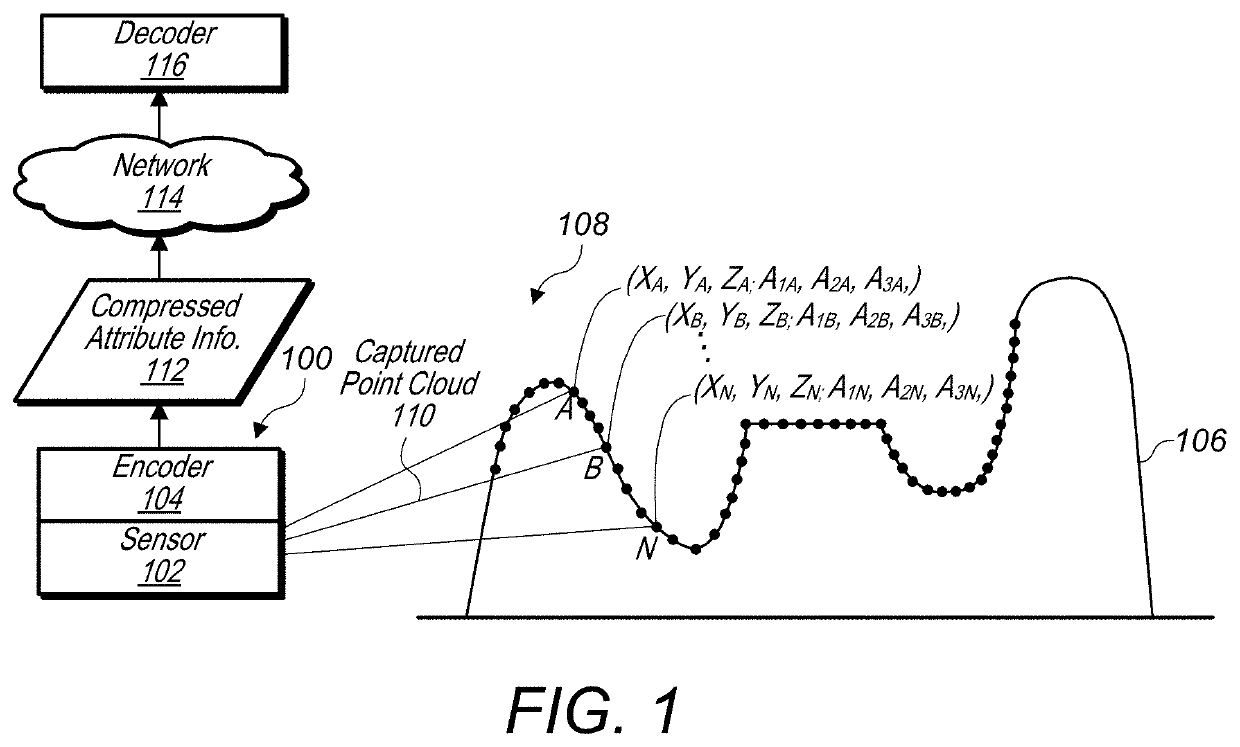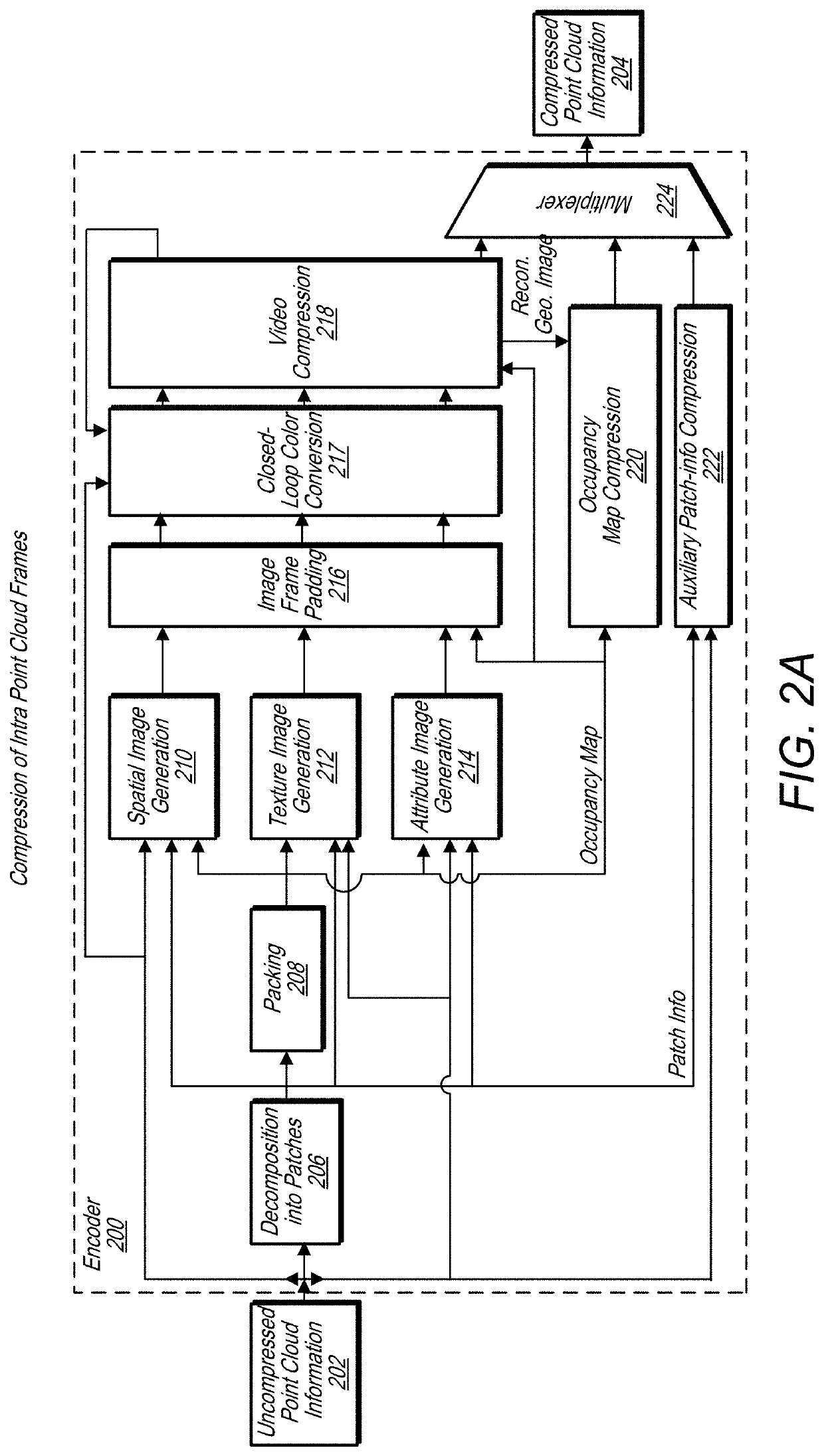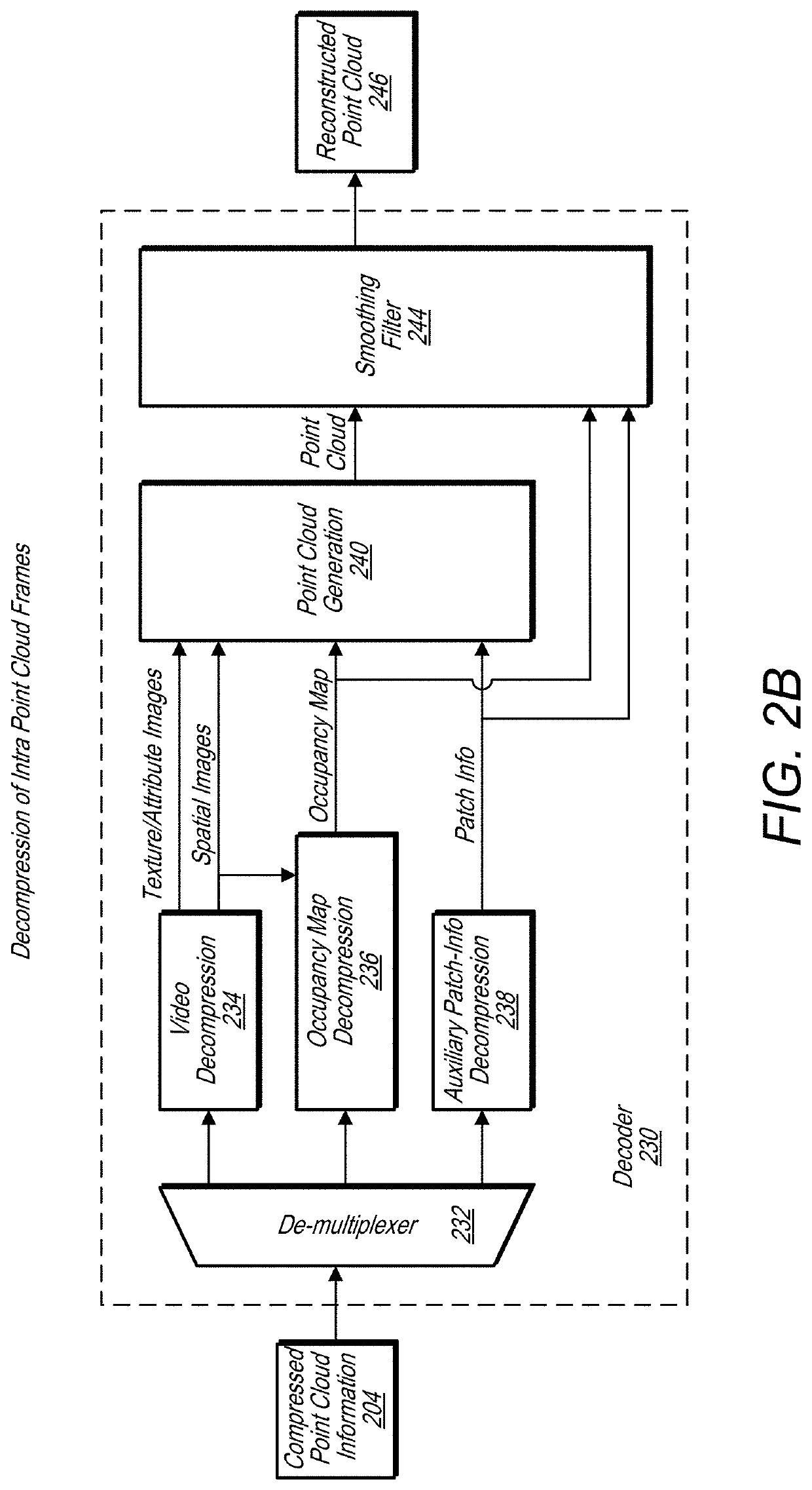Point cloud occupancy map compression
a technology of occupancy map and point cloud, applied in the field of compression and decompression of point clouds, can solve the problems of cost and time-consuming storage and transmission, and achieve the effects of reducing the conversion size of fame image, minimizing the distortion of improving the quality of the final decompressed point cloud colors
- Summary
- Abstract
- Description
- Claims
- Application Information
AI Technical Summary
Benefits of technology
Problems solved by technology
Method used
Image
Examples
example closed form
Solution
[0124]For each point Prec(i) in the reconstructed point cloud, let Q*(i) be its nearest neighbor in the original point cloud. For each point Prec(i) in the reconstructed point cloud, let (Q+(i,h))h∈{1, . . . , H(i)} be the set of point in the original point cloud that share Prec(i) as their nearest neighbor in the reconstructed point cloud. Let +(i) be the centroid of (Q+(i,h))h∈{1, . . . , H(i)}.
If H=0, then C(Prec(i))=C(Q*(i))
[0125]Denote as R-G-B vector C(P) associated with a given point P. In order to compute the color for a given Prec(i), we have the following formulation:
[0126]argminC(Prec(i))max{1NrecC(Prec(i))-C(Q*(i))2,1N∑h=1HC(Prec(i))-C(Q+(i,h))2}Wheremax{1NrecC(Prec(i))-C(Q*(i))2,∑h=1HC(Prec(i))-C(ℚ+(i))+C(ℚ+(i))-C(Q+(i,h))2}=max{1NrecC(Prec(i))-C(Q*(i))2,HNC(Prec(i))-C(ℚ+(i))2+1N∑h=1HC(ℚ+(i))-C(Q+(i,h))2+2N∑h=1H〈C(Prec(i))-C(ℚ+(i)),C(ℚ+(i))-C(Q+(i,h))〉}=max{1NrecC(Prec(i))-C(Q*(i))2,HNC(Prec(i))...
PUM
 Login to View More
Login to View More Abstract
Description
Claims
Application Information
 Login to View More
Login to View More - R&D
- Intellectual Property
- Life Sciences
- Materials
- Tech Scout
- Unparalleled Data Quality
- Higher Quality Content
- 60% Fewer Hallucinations
Browse by: Latest US Patents, China's latest patents, Technical Efficacy Thesaurus, Application Domain, Technology Topic, Popular Technical Reports.
© 2025 PatSnap. All rights reserved.Legal|Privacy policy|Modern Slavery Act Transparency Statement|Sitemap|About US| Contact US: help@patsnap.com



